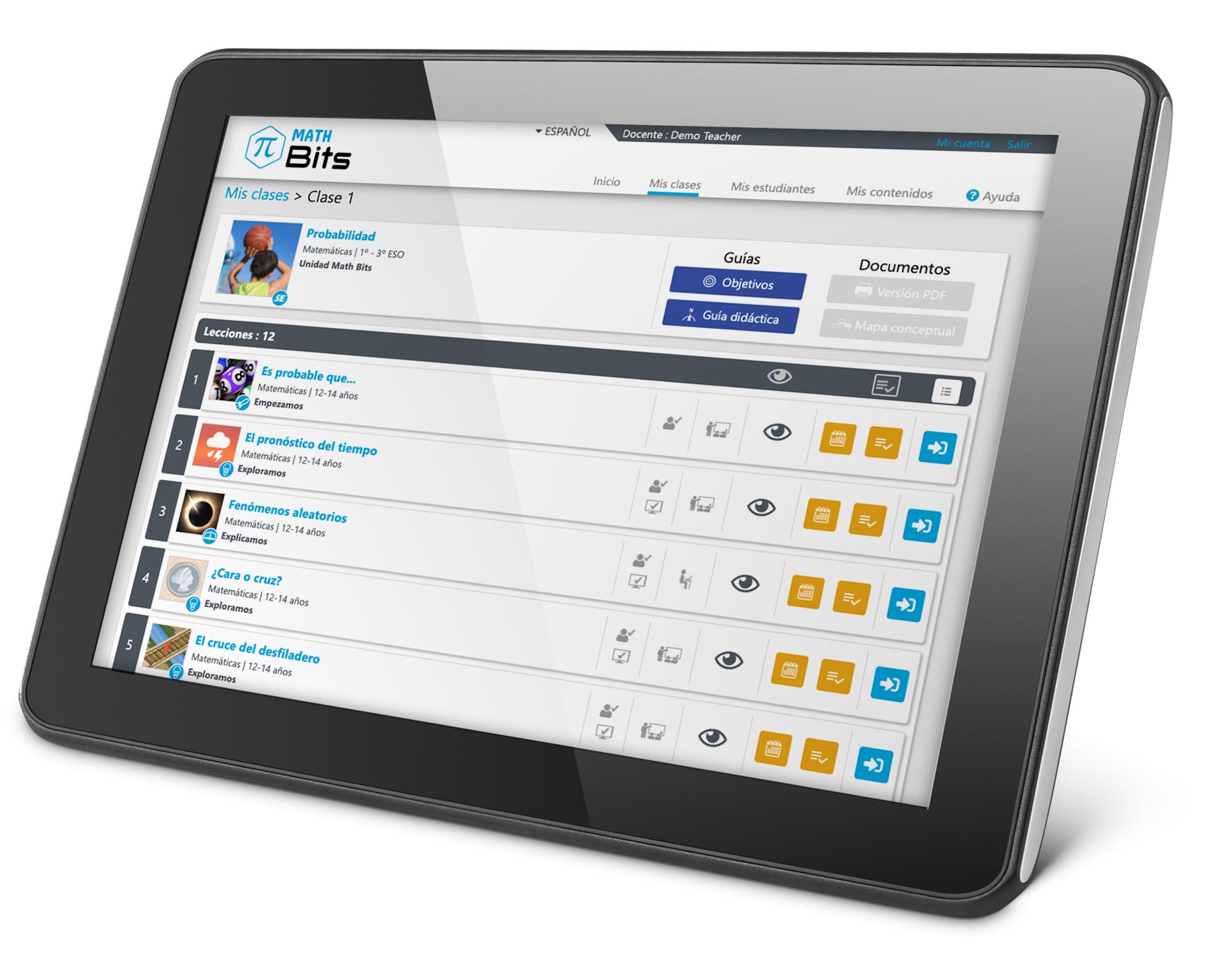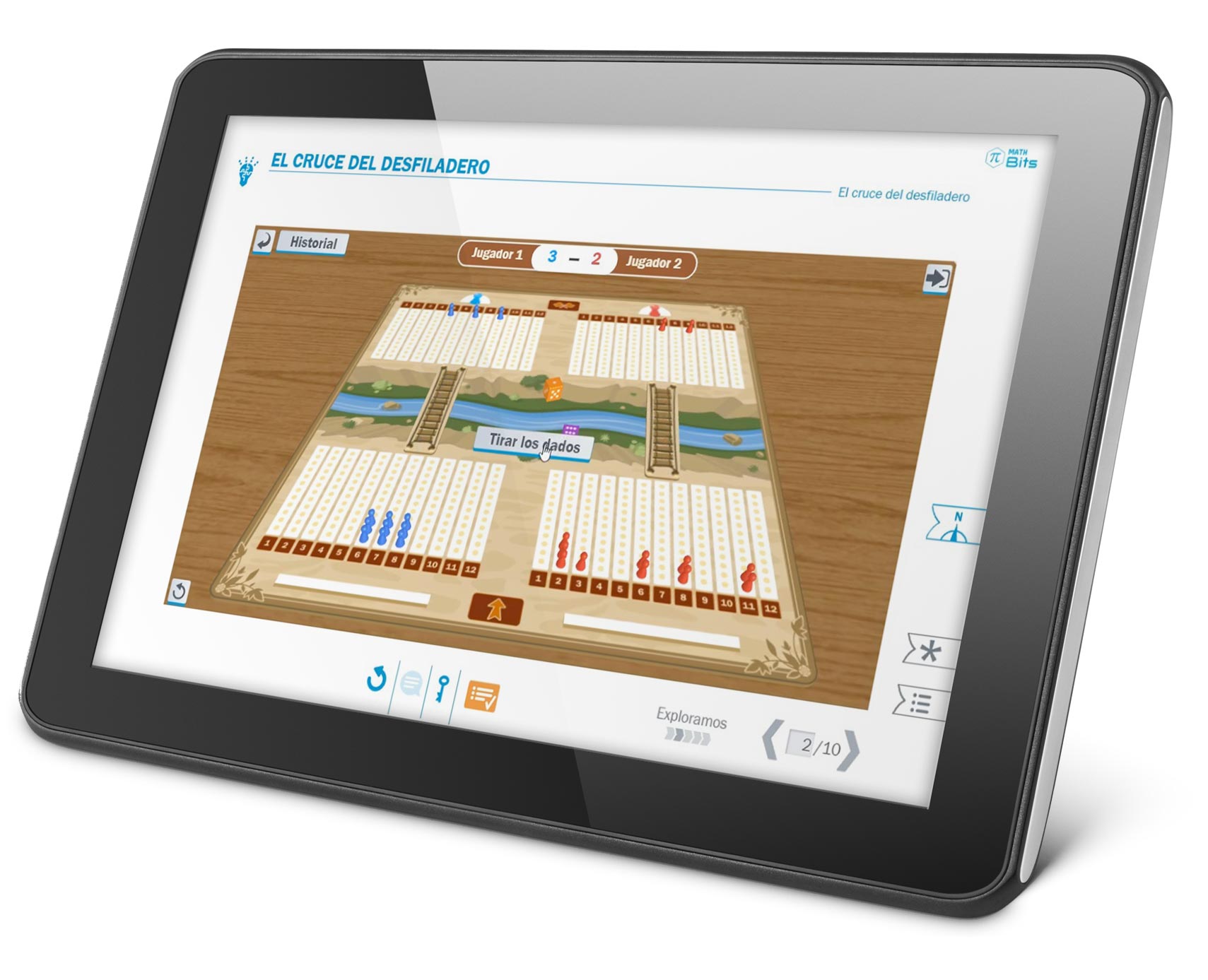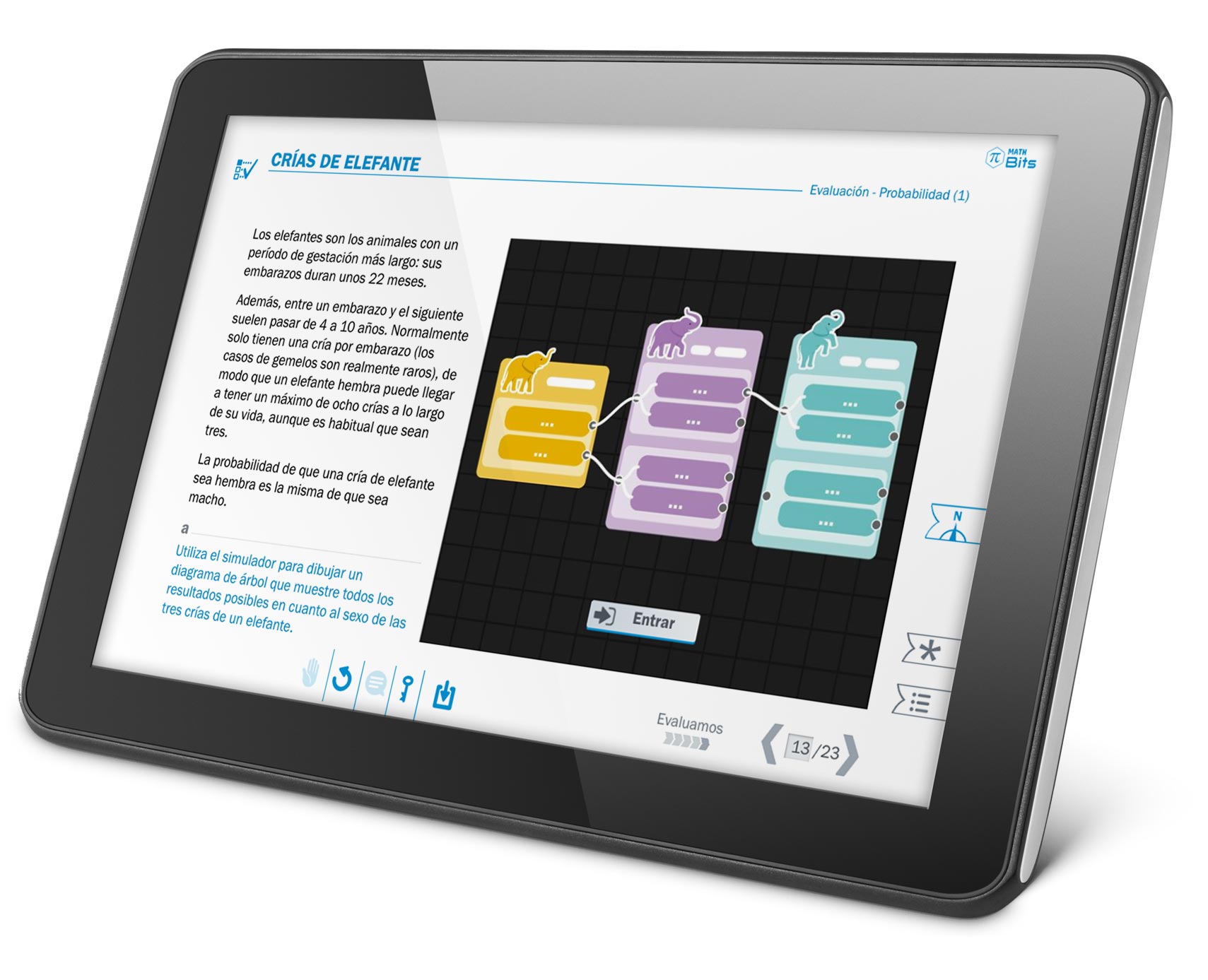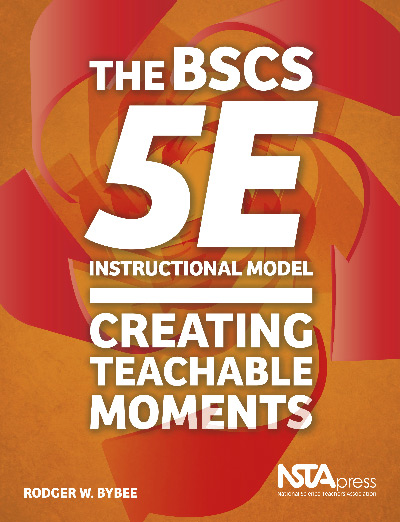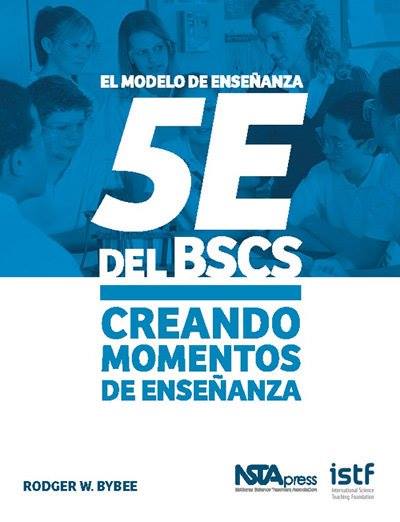The owner of this website is Learning Bits S.L., a limited liability company with registered office in Barcelona, on calle Sant Joan de la Salle 37, 08022, and TIN: B-65569790, enrolled on the Business Registry of Barcelona, Volume 42571, Folio 205, Page B410262, Entry 1. Contact email: [email protected]
Math Bits collaborates closely as a service provider with the International Science Teaching Foundation, a non-profit organization with registry number 08474113 and registered office in 12a Marlborough Place, Brighton, England, BN1 1WN. Contact email: [email protected]
Please read this document carefully before accessing this site or using the services it offers. By accessing this site or using the services that it offers, you agree to comply with the conditions set forth in this document. The information and the services of this site are provided by Learning Bits S.L. (hereinafter, Math Bits), in collaboration with the International Science Teaching Foundation, and its providers, provided that the user accepts the terms and conditions detailed below.
All the services provided and offered by Math Bits are governed current legislation.
Math Bits shall not be held liable for access to the website by natural and/or legal residents in jurisdictions where, for any reason, said services are contrary to their regulations.
Use of the information and services
The information (including but not limited to the advice and recommendations) and the services of the site (for example, the question and answer service by means of email) are offered only as a general educational tool and do not constitute any type of medical assessment or health care advice for any individual problem, nor do they replace advice or medical or professional services that a qualified health care provider knowledgeable of the particular situation of the interested party may offer. Always seek the opinion of your physician or another qualified health care professional about any doubt that you may have concerning an illness or issue and before starting any new treatment. No content or information that appears on this site has the purpose of making a diagnosis or starting a medical treatment. The information and the services are provided under the explicit understanding that neither Math Bits nor its suppliers or users are dedicated to providing legal, medical, psychological or similar services. The use of the site means that users are subject to the notices and warnings that may appear on this site. Math Bits and its agents assume no liability for any consequence that results directly or indirectly from any action taken or inaction based on the information, the services, or other materials that appear on this site. Although Math Bits makes an effort so that the information which appears on this site is truthful and up-to-date, Math Bits and its suppliers cannot guarantee, nor shall they be liable for any damage or loss related with to truth, integrity or usefulness of the information.
User collaborations
The users who publish materials on this site (for example, on message boards, chat rooms or teacher created contents) will be governed by the following rules: (1) users may not post or transmit dishonorable, defamatory, obscene, fraudulent, harmful, threatening or malicious material that violates the property rights of third parties (including, but not limited to, any use that violates a copyright or registered trademark), any use that infringes the privacy or publicity rights of third parties, or any use that violates the laws in force; (2) users cannot interfere with the use and enjoyment of this site by other users; (3) users cannot use this site to carry out activities that are illegal or that violate the rights of third parties; (4) users cannot use this site to advertise or sell products or services to third parties; and (5) users should immediately inform Math Bits if they have reason to suspect that a user is using materials that infringe the copyright of third parties. Users who publish materials understand that they have exclusive rights to such materials or are using them with permission from the copyright owner, and grants Math Bits ownership of such materials. Math Bits shall not be liable for the content of any material published by the users, but reserves the right, at its discretion, (1) to correct or delete any documents, information or other materials sent or which appear on this site, and (2) to deny access to the site by any user who does not comply with these terms and conditions.
The contents published by the users include the opinions and points of view of the author of said content. Math Bits shall not be held liable for the veracity of any message created by a user, and individuals must always consult a physician or another qualified health care professional before proceeding to make use of any information found on this site.
Obligation to use the services properly
Users agree to use the services provided by Math Bits in accordance with the law, these terms and conditions, as well as the generally accepted practices online. Users must abstain from using the services with illegal purposes or effects or those contrary to what is established in these terms and conditions.
Users agree and are aware that advertisements, chain email messages and other content which does not provide an opinion or debate about articles or news are not allowed to be posted in the forum services, news comments, blogs, as well as any other spaces that allow for the users' opinions to be published. By using the services, users accept these terms and conditions, and agree to not use the services to send messages that defame or insult, or which contain false, inappropriate, abusive, harmful, pornographic, or threatening information, or information that damages the public image and/or private life of third parties or which for any reason infringe upon any law.
Links to other websites
This site may include links to other websites solely for the user's ease of use. Math Bits does not endorse any of these sites, nor the information, materials, products or services contained or accessible through these sites. Users access and use these sites, including the information, materials, products and services that they contain under their own risk.
Math Bits shall not be held liable for the legality of third-party websites to which one can access from this website.
Warranty Disclaimer
Math Bits and its providers are exempt from any express or implicit warranties regarding the information, services and materials contained on this site, including, but not limited to, any implicit warranties of the marketability, suitability for a particular use and of not violating the rights of third parties. All the information, services and materials are offered 'as is' and 'if available', without any type of guarantee.
Limitation of liability
The company shall not be held liable for ensuring the absence of worms, viruses or other harmful software elements, and the user shall be responsible in all cases for having the appropriate tools to detect and get rid of harmful software elements. Therefore, Math Bits shall not be held liable either for damages caused to the IT devices of the users or third parties due to the use and provision of online services.
Nor shall Math Bits be held liable for the use that third parties make of the information published on the site, nor of the damage suffered or economic losses which, directly or indirectly, cause or may cause economic or material harm or damage to any data caused by the use of said information. However, taking into consideration articles 11 and 16 of the Law on Information Society Services and Electronic Commerce, Math Bits is committed to removing or, in any case, blocking contents that could affect or contravene Spanish or international law, the rights of third parties and public order.
Math Bits shall not be held liable for damages that may be caused due to software errors or incorrect settings installed on the user's device. Any liability for any technical incident or error which is caused when the user is connected to the Internet is excluded. Likewise, Math Bits cannot guarantee the lack or interruptions or errors in accessing the website.
We hereby inform you that any price and/or offer that you can see on our website is strictly indicative. If the user wants to know the exact price or offer, they should contact Math Bits through the following email address: [email protected]
Applicable Legislation
Catalan legislation and, when appropriate, Spanish legislation shall be the applicable law in the case of a dispute or conflict of interpretation of the terms that make up this legal notice, as well as any issue related to the services that Math Bits provides.
Compensation
The user agrees to exempt Math Bits, its affiliates and its providers of liability for any damage, loss, claim and cost (including the reasonable fees of a legal service) related to (1) the non-compliance of these terms and conditions by the user, and (2) the publication of material on this site by the user.
Included services
When a user acquires a Math Bits license, they obtain the right to access a series of multimedia digital contents (including interactive tools) during a limited period of time, which coincides with the school year in course.
According to the type of license acquired, the right to access the contents is limited to:
-
Student licenses: these licenses only give the right to access the Math Bits contents that a teacher linked to said license duly assigns them according to the teacher's educational criteria and class schedule. Therefore, a student license does not provide access to contents by default and is only functional if it is linked to a teacher's license at a school registered with Math Bits. This particular feature is explicitly stated when these licenses are purchased.
-
Teacher's licenses: these licenses give the right to access a set of contents determined by the official curriculum of the educational levels in which the teacher gives their classes in their country.
Property Rights
All the materials on this site (as well as the organization and the design of the site), the design of the portal and its source codes, as well as the logos, brands and other distinctive signs that appear on the site are the property of Math Bits or its suppliers, who are also the owners of the copyrights, and can be accessed only for personal and non-commercial use, and are protected by the corresponding intellectual and industrial property rights.
The user may not copy, distribute or transfer any material from this site, in whole or in part, without the written authorization of Math Bits or its providers.
Math Bits is the owner of all the software rights of the digital publication, as well as the industrial and intellectual property rights concerning the website contents, with the exception of the rights over those products, services and/or publications of a public nature which are not the company's property.
Math Bits can provide this from their web file or downloadable applications for users. This is the case of its educational units in PDFs, which users can download and print on their own accord. This downloadable and printable version in PDF is an inseparable part of a digital multimedia learning unit by Math Bits. Its content comes from an online multimedia digital work on a website owned by Math Bits and its objective is to complement the digital contents with a printable, offline format to facilitate classroom work without having to procure a device for each student. The copy and reproduction of this version in PDF is allowed without the need for authorization under the following joint conditions:
- Its use shall complement the legal use of the digital multimedia version.
- Its use will remain restricted to the academic and educational sphere.
- This version shall be distributed free of charge.
- In no case can its content be modified.
For any other use, the reproduction, distribution, public communication or transformation of this PDF version is expressly prohibited without the authorization of the copyright holder, Math Bits.
All the information which is received on the websites, such as comments, suggestions or ideas, shall be considered as transferred to Math Bits free of charge. Therefore, information which cannot be processed in this way should not be sent.
Changes to the site
Math Bits and its providers may make improvements, modifications, corrections or changes to the information, the services, the products and other materials on this site, including removing them, or taking down the site, at any time, without prior notice. Math Bits may modify these terms and conditions at any time, and these modifications shall immediately enter into force after the pertinent modified document has been published. Consequently, the user agrees to review the conditions regularly, and their continued access to this site, or its use, shall be interpreted as the user's acceptance of the new conditions.
Miscellaneous
These terms and conditions and the resolution of any dispute related with them or with the site will be governed and interpreted in accordance with the laws of Spain, without giving effect to any principles of conflict of law. The waiver by Math Bits in the strict compliance of any provision of these conditions must not be interpreted as a renunciation of any provision or right. Any action or legal proceedings between Math Bits and the user in relation to these terms and conditions will be exclusively resolved in a court with competent jurisdiction located in Barcelona, Spain.
Math Bits is a registered trademark of Learning Bits S.L. Other registered trademarks are the property of their respective owners.
